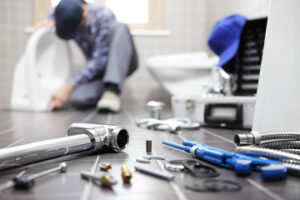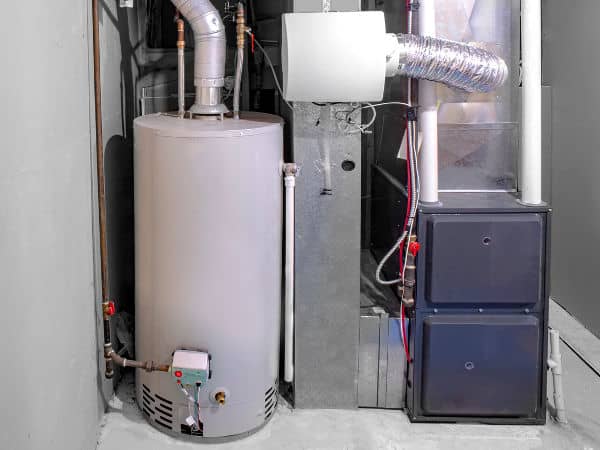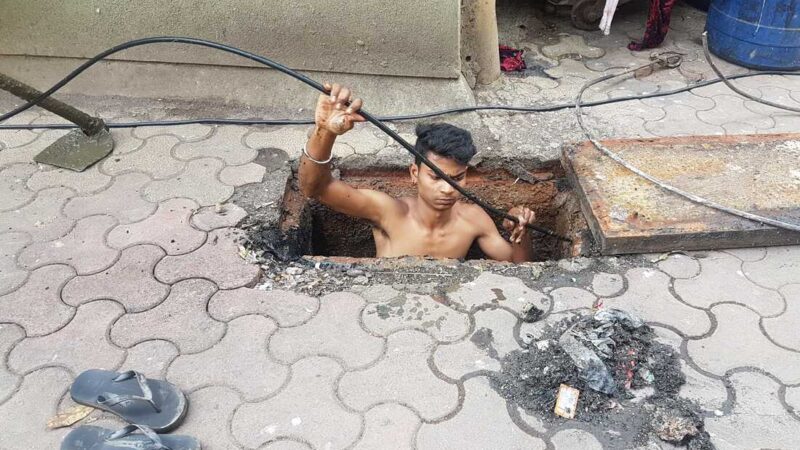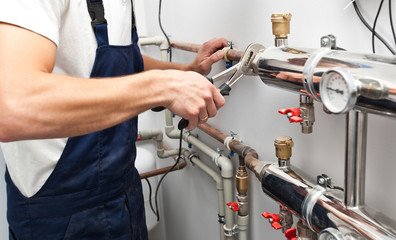The Plumbing System of a House
A house’s plumbing system includes the water supply, drains and waste systems. It is important that the plumbing in a house be functioning properly because even small leaks can cause serious damage and higher utility bills. Plumbers inspect the plumbing in new homes to ensure everything works properly. Plumber Ventura County also checks the pipes in older homes to ensure they are lead-free, which can be dangerous for health.
 The water supply line brings fresh water into the house and leads to sinks, showers, toilets, washing machines, and water heaters. The water line is under pressure so it can travel to the furthest corners of the property and up to the highest floors. Water lines are usually made of copper, galvanized iron or plastics and may be either rigid or flexible. Most homes have two main water lines: one for cold water and the other for hot. Each will have a shut off valve that can be turned off in the event of an emergency.
The water supply line brings fresh water into the house and leads to sinks, showers, toilets, washing machines, and water heaters. The water line is under pressure so it can travel to the furthest corners of the property and up to the highest floors. Water lines are usually made of copper, galvanized iron or plastics and may be either rigid or flexible. Most homes have two main water lines: one for cold water and the other for hot. Each will have a shut off valve that can be turned off in the event of an emergency.
Water pipes can be a significant source of leaks and flooding. They must be properly sized and located to avoid freezing or bursting. For this reason, they are often buried underground to prevent freezing and at least 4 feet in depth if possible. This is required by state and local plumbing codes.
In newer homes, the main water line enters a house at ground level or below in a basement. There is a water meter that records the amount of water used and the main shut-off valve is normally located close to it. There may also be a hose bib and backflow preventer at this point.
If the main water line is a metal pipe, it should be properly insulated to avoid freezing. It should not be located in uninsulated walls or in an attic where it can be subjected to temperature changes and leaks. In insulated walls, it should be placed at least 6 inches from the wall surface.
It is important to keep in mind that the responsibility for maintaining water pipes is shared between the homeowner and the water company. The water company is responsible for the water line from their tap at the boundary of your property up to the first stop tap inside your home or property. The water pipe work from the first stop tap, including any water fittings, is the responsibility of the home or property owner to maintain.
Some older houses have large water supply pipes that are tapped into the side of the house or the rear of the house. These can be replaced with PEX pipe, which is more cost-effective and more flexible. PEX can also be used to replace existing copper or galvanized steel pipe work.
Drainage is the opposite of supply — instead of bringing in fresh water, it flushes away waste. A system of pipes and traps carry household waste to the sewer line or septic tank. A plumber may use the term “drain-waste-vent” or DWV to describe this piping network.
Most of the drainage to a house is hidden from view behind walls and under floors. A homeowner’s plumbing maintenance often centers on keeping these drains clear of debris. This is usually not a big deal for sinks, bathtubs and showers, but can be a bigger problem with toilets. Many people purchase products that claim to clear clogged drains, but these chemicals can actually erode cast-iron drainpipes.
If you keep food scraps out of kitchen sink drains, hair out of bathroom drains and nothing but sewage and toilet paper into toilets, you should not need to call the plumber for frequent drain cleaning services. However, a lot of people do not take this advice and will experience significant drain obstruction that can lead to expensive plumbing repairs.
Your house drains include a house sewer pipe that leads to the mainline plumbing, which then connects to the municipal waste-water or septic-system lines. Your home’s sanitary sewer pipes are pitched, or sloped downward, to assist gravity in carrying away waste matter.
Each fixture has a drain that empties into the house drainage system. The drainage pipes are sized according to how much each fixture will discharge in one minute. The Uniform Plumbing Code Committee has developed a method to determine the recommended minimum size for a fixture drain.
The drains also have a trap that seals the drainage system from a house sewer line. The curved portion of the drain, called a P-trap, is designed to hold standing water that prevents foul gases from escaping into the house.
It is a good idea to run water through all the drains every so often to flush out the system and remove any sediment that builds up in the drain pipes. This will help prevent future blockages and reduce the frequency of drain cleaning service calls.
The sewer to a house is the main line that takes waste from every drain in the home to a city sewer system. The city may or may not allow plumbers to work on the sewer main, but they can usually work on the branches that lead to individual houses. Like any other part of the plumbing system, a house sewer line needs regular maintenance to keep it working well.
The type of maintenance will vary depending on the area, but it is generally best to clean out a sewer line at least once every 18 to 22 months. This will help to prevent expensive repairs and clogs. If you are unsure how often to clean your sewer lines, ask your plumber. They should be able to give you the best advice.
A house sewer line can become clogged with hair, grease, and other debris. When this happens, the toilets will flush slowly and there may be foul odors coming from them. If you notice any of these symptoms, call a plumber immediately. A plumber can use a special camera to look at the inside of the line and find the source of the problem.
If the problem is a clog, your plumber will likely try to dislodge it with high water pressure from their truck. If this doesn’t work, they will probably dig a small hole and remove the clog by hand. Once they have removed the clog, they will fill in the hole and seal it with cement.
In some cases, the plumber will need to repair or replace the entire line. The cost of this will depend on what caused the problem. Insurance will typically cover the cost if it was damage from vandalism or an accident. However, if it was wear and tear from normal use, the insurance will probably not pay for the repair.
A good way to prevent sewer problems is to put all cooking oil into the garbage. Also, do not pour grease down any sink or toilet. It can cause a blockage in the kitchen drain and even the sewer line.
Most North American homes use a tank water heater to provide hot water for showers, washing machines, dishwashers and sinks. These can be powered by electricity, natural gas, propane, heating oil or solar energy. Tanks come in various sizes from 75-400 L (20-100 US gallons) and are usually located inside the house, but some are outside. The tank has a pressure relief valve and an anode rod to protect it from rust and corrosion. Its top is usually insulated to reduce heat loss. The tank also has a drain valve and shut-off valve for water, gas and electrical service.
As a safety precaution, it is best to hire an experienced plumber for maintenance tasks on a hot water heater. These involve electricity, water and sometimes gas, which can be dangerous for an untrained person to handle. Some tasks can be done by a homeowner, but a professional should inspect and approve any work that involves a combination of these elements.
Some of the most important maintenance tasks for a water heater include draining and flushing the tank, cleaning the flue pipe and ensuring there are no leaks. These are not complicated tasks, but they are important to prevent serious problems down the line. A plumber can also perform a safety inspection on the heater to ensure that it has an exterior expansion tank and a gas shut-off valve for emergencies. They can also check for sediment buildup that can shorten the life of a tank or reduce efficiency by filling it with water and running it through to flush out any particles.





